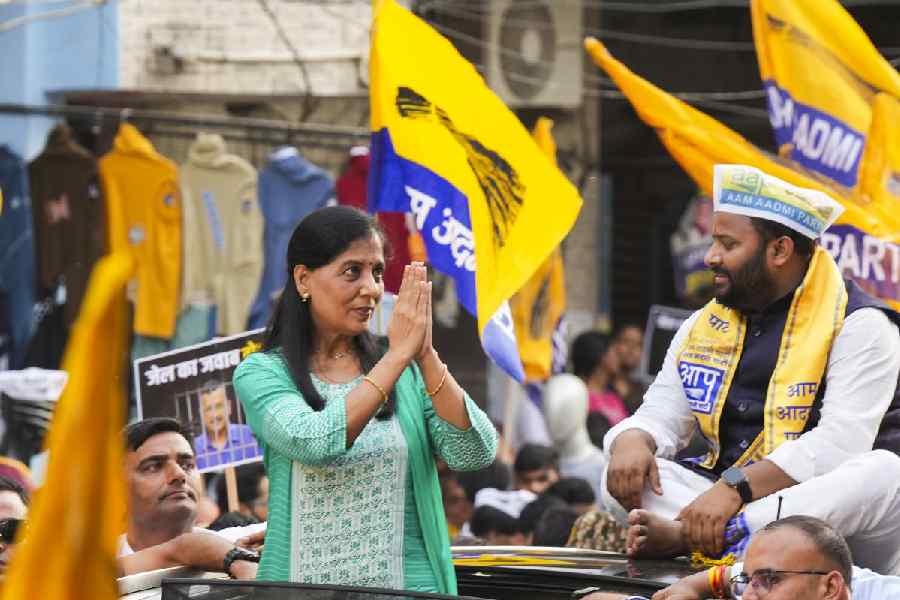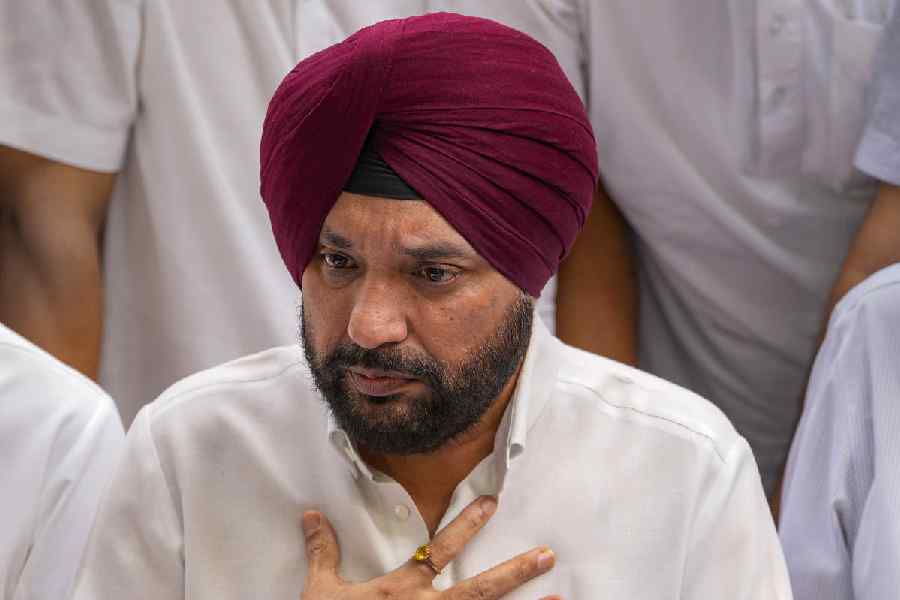 |
| Artists work on the idol at Ratu Fort. Picture by Manik Bose |
Ranchi, Sept. 23: The Ratu Fort, which was once the powerhouse for Nagvanshi rulers of Chhotanagpur, is getting ready for Durga Puja and the age-old ritual of buffalo sacrifice.
Ashok Sutradhar, the artist whose family has been working for Nagvanshi dynasty for several years, is now busy giving final touches to the idol. The place inside the fort where buffaloes will be sacrificed has also been cleaned. The “sacrificial wood” is ready too.
The Hatia MLA and “yuvraj” of the Nagvanshi dynasty, Gopal Sharan Nath Shahdeo, is ensuring that all goes according to plan.
“With the Assembly elections on the cards, political activities have become hectic. But the puja is very special for our family and the people of the region. I would give enough time to it,” said Shahdeo.
Besides, the Durga Bati pandal situated within Ranchi at Ratu Fort is the only other puja that is as old. But only the puja at Ratu Fort observes animal sacrifice.
Here, Durga Puja had begun soon after the Nagvanshi rulers shifted from Palkot to Ranchi in 1870. But the royal family, which was based in Chhotanagpur and districts of Ranchi, Gumla, Simdega, Khunti and Palamau, had started offering animals to the goddess long before shifting to Ranchi. In 64AD, their capital was in Sutiambe near Ranchi. The royals later shifted to Chutia, Khukhragarh and then to Palkot before arriving in Ratu.
“In 1870, Rani Laxman Kunwar, the mother of Pratap Uday Nath Shahdeo started the puja at Ratu. Since she was from Bengal, uchcharan (recital of mantras) was done in Bengali. We are still keeping this tradition alive,” said Sachindra Nath Shahdeo (76). He, however, could not specify when the tradition of karra (buffalo) sacrifice began.
Some years ago, villagers would also participate in buffalo sacrifice. They would come to the fort with their own buffaloes. Today, things have changed. Villagers don’t come from far-flung places like Gumla, Simdega and Palamau but several do arrive from the neighbourhood.
“The number of buffaloes being sacrificed at the altar has also now come down to only seven to eight against hundreds,” Shahdeo said. The Nagvanshi family is also keeping another tradition alive.
Several decades ago, during Bijoya Dashami, a tribal priest of Dimba village near Ratu had brought pata khanda, a kind of flower from his village and offered it to the maharaja. Even today, this practice is repeated.
“This flower, it is believed, has links with Bakasura, who belonged to the dwapara yuga,” Shahdeo said.










